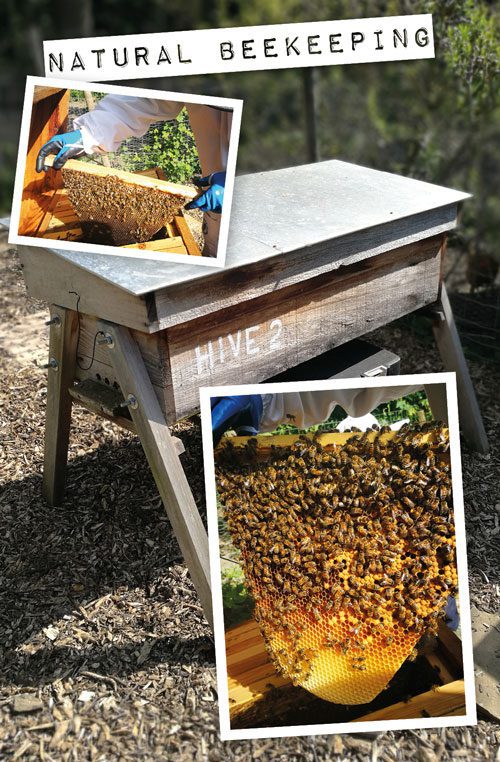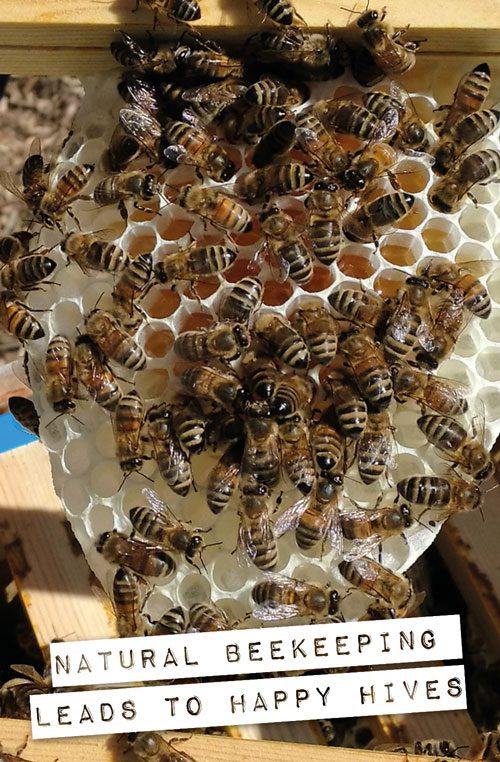As I’m about to write this blog, my last stare of procrastination falls on the perfect smelling flowers of my orange plant, plump and ready to burst open. I wonder what how the honey made from its nectar would taste? Those that grow their produce know that distinctive taste; the taste that brings a smile to your face. Our bees’ honey is unique to me because I only have two jars of it for the season.
Happy Hives
Unlike most beekeeping, which mainly focuses on honey production, natural beekeeping has adopted an approach that focuses on putting the welfare of the bees first. Eight people share our apiary at Redacre Growing Project in Mytholmroyd (Yorkshire).
Unlike traditional beekeepers, we collect honey mostly in the late spring so that bees have a guaranteed supply of nectar throughout the season and use the summer honey during their winter hibernation. Think about it – would you rather be a bee that has a nutritious food supply of quality honey from organic allotments next door or fed bleached sugar?
We don’t use smokers or any sprays to keep the bees sedated. Instead, we planted some thyme plants close to the hives; when brushed with a hand just before a hive check, their essential oils help calm the bees down.
Peaceful Observation
We often sit in the apiary and observe the bees from a small distance; you notice their behavior patterns, what pollen they bring and how much of it, and whether there are any dead bees being brought out of the hive. In return, they learn your smell and get used to your presence.

A gentle tone of buzzing chaos surrounds us as we inspect the hive. Inspections are much easier with the type we’re using – a top bar hive. This rectangular structure reminds me of a coffin on long legs, with only a top bar instead of frames. Sometimes, bars have a groove down the middle to guide the bees to where to start the comb. This style mimics their behavior in nature – they can build a natural, droopy comb that looks like a teardrop.
They tend to build the cells larger than those on a pre-shaped foundation, which they fill with brood and honey side by side, as there is no queen excluder. This helps them to grow the colony, rather than fill with honey for human use. The further away from the entrance, the less brood and more honey appear. This allows us to judge if we can harvest the extra supplies.

Harvest and Care
As we gently crack the propolis bars and lift to check the comb, it seems that the buzz goes up a semitone with each bar closer to the entrance. The behavior of the bees changes, their noise is louder, and the guard bees are bumping against our hood nets. They’re informing us that we’re too close to the brood and the queen. If there are no other warning signs, we often leave the last few bars untouched; we trust them to be a responsible superorganism.

In terms of varroa control, in our apiary, we have never had an infestation significant enough to warrant chemical treatment. We’re monitoring the numbers on varroa boards, and should we have any abnormalities, we’d use icing sugar duster to cover the bees in the first instance.
This will make them groom themselves, knocking the varroa down through the mesh bottom of the hive, straight on the board for us to count. Failing that, we’d try eco-floors with leaf mold, which mimics forest floor. This allows for the varroa predators (Stratiolaelaps) to establish and protect the hive. Natural beekeeping does not exclude chemical remedy if the infestation is severe, but it’s rarely needed.
R-E-S-P-E-C-T
Maybe traditional beekeeping seems a little odd to me since I have learned the natural way from the very beginning. There doesn’t seem to be the need for endless treatments and interference in the hive. As much as I don’t love to describe natural beekeeping as “a holistic approach” (yes, it’s a bit hippy-dippy), it certainly is a mindful observation of something that existed for thousands of years without our interference. I believe that with respect for nature and its creatures, we may have the opportunity to restore what we’ve broken.